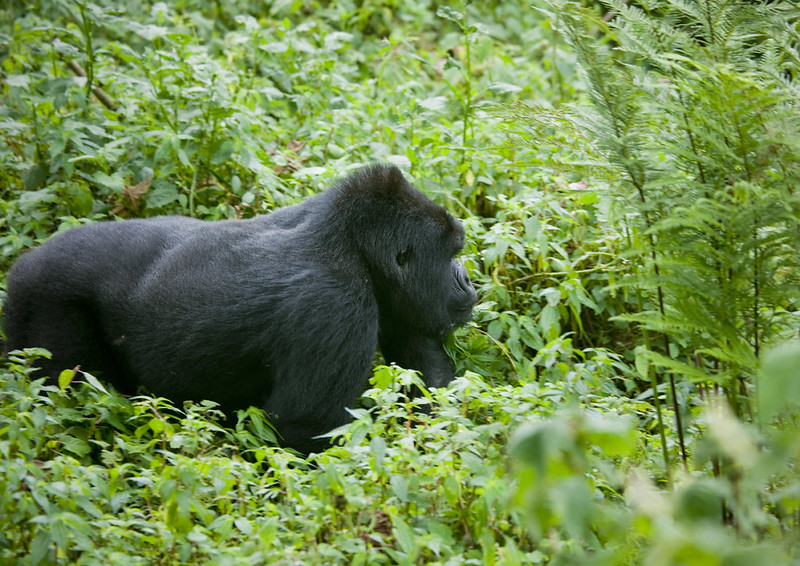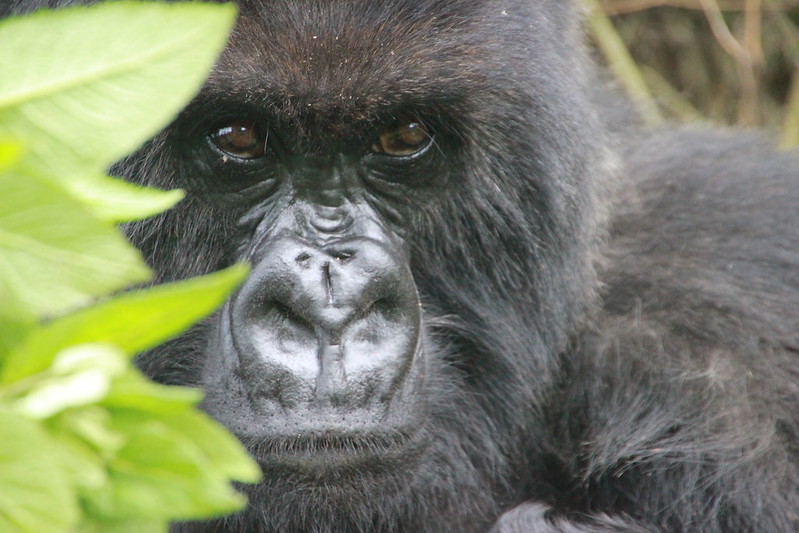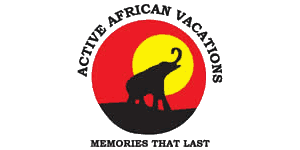Volcanoes National Park Rwanda
Volcanoes National Park is a renowned protected area located in the Virunga Mountains of north western Rwanda. This national park holds immense significance due to its rich biodiversity, stunning landscapes, and its role in the conservation of the endangered mountain gorillas. Here’s an introduction to Volcanoes National Park:
Location: Volcanoes National Park is situated in the Virunga Massif, a chain of volcanic mountains straddling the borders of Rwanda, Uganda, and the Democratic Republic of the Congo (DRC). It covers an area of approximately 160 square kilometers (62 square miles) in Rwanda’s Musanze district.
Mountain Gorillas: One of the primary attractions of Volcanoes National Park is its population of critically endangered mountain gorillas. The park is home to several habituated gorilla families that can be visited by tourists on guided gorilla trekking expeditions. These treks offer a rare opportunity to observe these majestic primates in their natural habitat.
Biodiversity: In addition to mountain gorillas, Volcanoes National Park is teeming with diverse flora and fauna. The park’s montane rainforests, bamboo thickets, and alpine meadows provide habitat for a variety of wildlife, including golden monkeys, forest elephants, buffalo, and numerous bird species.
Volcanic Landscape:
The park is named after a chain of dormant volcanoes that dominate its skyline, including Mount Karisimbi, Mount Bisoke, Mount Muhabura, Mount Gahinga, and Mount Sabyinyo. These volcanic peaks are part of the Virunga Mountains, a UNESCO World Heritage Site known for its volcanic activity and rich biodiversity.
Gorilla Conservation:
Volcanoes National Park plays a vital role in the conservation of mountain gorillas, which are considered one of the world’s most endangered species. Efforts to protect the gorillas and their habitat, including anti-poaching patrols, community development initiatives, and tourism revenue sharing, have helped stabilize and increase the gorilla population in the park.
Gorilla Trekking:
Gorilla trekking is the highlight activity in Volcanoes National Park, attracting thousands of tourists from around the world each year. Visitors embark on guided hikes through the forest to track and observe habituated gorilla families, spending an unforgettable hour in close proximity to these remarkable creatures.
Cultural Experiences: In addition to gorilla trekking, Volcanoes National Park offers opportunities for cultural experiences, including visits to nearby villages, interactions with local communities, and cultural performances showcasing traditional Rwandan music, dance, and crafts.
Accessibility:Volcanoes National Park is easily accessible from Rwanda’s capital city, Kigali, by road. The journey takes approximately 2-3 hours, making it a convenient destination for tourists seeking to combine a wildlife safari with other attractions in Rwanda.
Overall, Volcanoes National Park is a must-visit destination for nature lovers, wildlife enthusiasts, and adventure seekers, offering an unforgettable opportunity to experience the beauty and biodiversity of the Rwandan wilderness while contributing to the conservation of mountain gorillas and their fragile habitat.
History of Volcanoes National Park.
The history of Volcanoes National Park in Rwanda is intertwined with conservation efforts to protect its unique biodiversity, particularly the critically endangered mountain gorillas. Here’s an overview of the park’s historical background:
Colonial Era:
The area that is now Volcanoes National Park was originally inhabited by indigenous peoples, including the two hunter-gatherers. During the colonial period, which began in the late 19th century, Rwanda, along with Burundi, was colonized by Germany and later Belgium. The colonial authorities designated the region as a protected area to conserve its natural resources.
Establishment of National Parks:
Volcanoes National Park was officially established in 1925 by the Belgian colonial administration, making it one of the oldest national parks in Africa. Initially, the park was created to protect the mountain gorillas inhabiting the Virunga Mountains and to regulate gorilla hunting, which had become a significant threat to their survival.

Gorilla Conservation Efforts:
In the decades following its establishment, Volcanoes National Park became a focal point for conservation efforts aimed at protecting mountain gorillas from poaching, habitat loss, and human encroachment. Conservationists and researchers, including Dian Fossey, conducted pioneering studies on gorilla behavior and ecology, raising awareness about the plight of these endangered primates.
Dian Fossey and Gorilla Research:
American primatologist Dian Fossey played a pivotal role in gorilla conservation in Volcanoes National Park. She conducted groundbreaking research on mountain gorillas, studying their social dynamics, behavior, and habitat requirements. Fossey’s work brought international attention to the plight of mountain gorillas and contributed to the establishment of protective measures for their conservation.
Gorilla Tourism:
In the 1970s, gorilla tourism was introduced in Volcanoes National Park as a sustainable alternative to gorilla hunting. Visitors were permitted to trek into the forest to observe habituated gorilla families, generating revenue for conservation efforts and providing economic opportunities for local communities.
Conflict and Instability:
Volcanoes National Park, like much of Rwanda, was affected by political instability and conflict in the latter half of the 20th century. The 1994 Rwandan genocide and subsequent civil unrest posed significant challenges to conservation efforts and wildlife protection in the park.
Stabilization and Conservation Success:
Despite the challenges posed by conflict and instability, Volcanoes National Park has made significant strides in conservation and gorilla protection in recent decades. Efforts to combat poaching, promote sustainable tourism, and engage local communities in conservation initiatives have helped stabilize gorilla populations and ensure the park’s long-term viability.
Today, Volcanoes National Park is a UNESCO World Heritage Site and a premier destination for gorilla trekking, attracting thousands of tourists from around the world each year. The park’s rich history, stunning landscapes, and remarkable biodiversity continue to inspire conservation efforts and foster appreciation for Rwanda’s natural heritage.
Best time to go to Nyungwe Forest national park.
The best time to visit Nyungwe Forest National Park in Rwanda depends on your preferences and the activities you plan to do. However, generally speaking, the most favorable time to visit is during the drier months, which offer better trekking conditions and clearer views of wildlife. Here are some factors to consider when planning your trip:
Dry Season (June to September and December to February):
The dry season, particularly from June to September and December to February, is generally considered the best time to visit Nyungwe Forest National Park.
During this time, rainfall is minimal, and the weather is relatively dry and sunny, making it ideal for outdoor activities such as hiking, chimpanzee tracking, and birdwatching.
Trails are generally more accessible, and wildlife sightings, including primates and birds, are more common due to reduced vegetation and clearer visibility.
Chimpanzee Trekking:
Chimpanzee trekking is available year-round in Nyungwe Forest National Park. However, the dry season is often preferred for trekking, as the trails are less muddy and slippery, making it easier to navigate the forest terrain.
Chimpanzees may be more active and easier to spot during the dry season as they forage for food in the forest.
Bird Watching:
Nyungwe Forest National Park is a paradise for birdwatchers, with over 300 bird species recorded within its boundaries.
Birdwatching is excellent throughout the year, but bird activity may be higher during the dry season when vegetation is less dense and birds are more active.
Canopy Walkway:
The canopy walkway in Nyungwe Forest is open year-round, but visibility may be better during the dry season when there is less cloud cover and rainfall.
Clear weather conditions during the dry season offer panoramic views of the forest canopy and surrounding landscapes from the suspension bridge.
Avoiding Crowds:
Nyungwe Forest National Park tends to be less crowded during the rainy season months of March to May and October to November.
Traveling during the shoulder season may offer a quieter and more serene experience in the park, although there may be occasional rainfall and muddy trails.
Ultimately, the best time to visit Nyungwe Forest National Park depends on your preferences for weather, wildlife viewing, and outdoor activities. Whether you choose to visit during the dry season for optimal conditions or during the rainy season for a more tranquil experience, Nyungwe Forest offers a unique and captivating experience year-round.
More on the best time to visit Volcanoes National Park.
Throughout the year, you can go gorilla tracking in the volcanoes at any time. However, the best months to travel to Rwanda are between the dry months of December through early March and June through September. In Rwanda, March to mid-May and July to September are considered the rainy seasons, whereas December to March is a lengthy dry season with sporadic highs of 29 degrees Celsius.
Although the weather in Rwanda is fantastic all year round, the dry season is preferred. Because of the typically nice weather at this time of year, animal watching is also more common. Because there is a lower chance of rain during the trip and excellent hiking conditions in the rainforest, this is also the best time of year for tourists who want to view gorillas. Because the equatorial environment is so unpredictable, we nevertheless urge you to wear waterproof gear even in the drier months. Since this is also the busiest season, costs for things like travel accommodations, car rentals, and other services could go up during this period.

On the other hand, some travelers—particularly those with limited funds—choose to travel during the wet season. Due to low occupancy, hotels provide discounted eating and lodging during this time, which is advantageous for guests. Furthermore, there is less demand for gorilla permits, ensuring that visitors will have an unhindered opportunity to view these endangered animals.
Activities in the volcanoes national park.
Gorilla trekking.
For the majority of visitors to go to Volcanoes National Park, this is their main concern. There are ten habituated gorilla families in the national park that are accessible via hiking. The vast Virunga Massif, which borders the Virunga National Park in Congo and the Mgahinga Gorilla National Park in Uganda, is also included in Rwanda’s volcanic park. It is required for tourists to have a gorilla license, which costs 1500 dollars per person for an hour of interaction with primates in Rwanda. All licenses must be granted by the Rwanda Development Board.
Golden monkey trekking.
Golden monkey trekking is another well-liked activity in Volcanoes National Park that brings more tourists into the rainforest. When on a safari in Rwanda, visitors should not miss the amazing golden monkeys. The only places where visitors can see golden monkeys in their native environments are the Volcanoes Wanda and Maghinga Gorilla national parks. Luckily, trekking with golden monkeys only costs $100, which makes it less expensive than traveling to see gorillas.
Volcano climbing.
In addition to wildlife, Volcanoes National Park is home to over three defunct volcanoes. This gives visitors to the park the added advantage of being able to climb to the top of any volcano, rewarding them with breath-taking vistas of Kigali, the Virunga volcanoes, the country’s rolling landscapes, and nearby communities. Mt. Karisimbi is the most often hiked volcano, and it is well worth the effort.
Dian Fossey Hike.
An essential experience in Rwanda’s Volcanoes National Park is the hike/trek to the Dian Fossey grave site (tomb). The purpose of the hike is to educate visitors about the research done by renowned American primatologist and conservationist Dian Fossey, who devoted her life to studying mountain gorillas.
Community tour.
One of the greatest and most enjoyable methods to discover more about the locals around Volcanoes National Park is through participating in local community excursions. By going to their farms and getting to know them, you can discover more about the inhabitants and their way of life. More and more customers choose to engage in this activity in the volcanoes following their gorilla and golden monkey trekking experiences. For them, this serves as a soothing session.
ACCOMMODATION IN THE VOLCANOES NATIONAL PARK.
Accommodation options in Volcanoes National Park cater to a range of preferences and budgets, offering comfortable lodges, luxury resorts, and budget-friendly guesthouses. Here are some popular accommodation choices within or near Volcanoes National Park:
Bisate Lodge:
Bisate Lodge is a luxury eco-lodge nestled in the natural amphitheater of an eroded volcanic cone, offering breathtaking views of the surrounding volcanoes. The lodge features spacious villas constructed with locally sourced materials, elegant furnishings, and modern amenities. Guests can enjoy gourmet dining, guided gorilla treks, and cultural experiences.
Virunga Lodge:
Virunga Lodge is a luxury safari lodge located on a ridge with panoramic views of the Virunga Volcanoes and twin lakes. The lodge offers comfortable cottages with private balconies, cozy fireplaces and en-suite bathrooms. Guests can indulge in fine dining, spa treatments, and gorilla trekking adventures.
Sabyinyo Silverback Lodge:
Sabyinyo Silverback Lodge is an upscale lodge located near the headquarters of Volcanoes National Park. The lodge features spacious cottages with rustic charm, luxurious amenities and stunning views of the surrounding landscape. Guests can enjoy gourmet cuisine, guided gorilla treks, and community-based activities.
Kinigi Guesthouse:
Kinigi Guesthouse is a mid-range accommodation option located near the park headquarters. The guesthouse offers comfortable rooms with en-suite bathrooms, hot showers, and basic amenities. Guests can enjoy home-cooked meals, guided gorilla treks, and cultural performances.
Mountain Gorilla View Lodge:
Mount Gorilla View Lodge is a mid-range lodge situated on the foothills of the Virunga Volcanoes. The lodge offers spacious cottages with private verandas, cozy fireplaces, and modern comforts. Guests can dine at the on-site restaurant, relax in the garden, and embark on gorilla trekking adventures.
Muhabura Hotel:
Muhabura Hotel is a budget-friendly accommodation option located in the town of Musanze, near Volcanoes National Park. The hotel offers simple rooms with basic amenities, a restaurant serving local and international cuisine, and easy access to park activities.
Home Stays:
For an immersive cultural experience, visitors can opt for homestays in nearby villages, where they can stay with local families, participate in traditional activities, and learn about Rwandan culture and customs.
These are just a few of the accommodation options available in and around Volcanoes National Park. Whether you’re seeking luxury, comfort, or affordability, there are lodging choices to suit every traveler’s preferences while exploring the natural wonders and wildlife of Volcanoes National Park.

